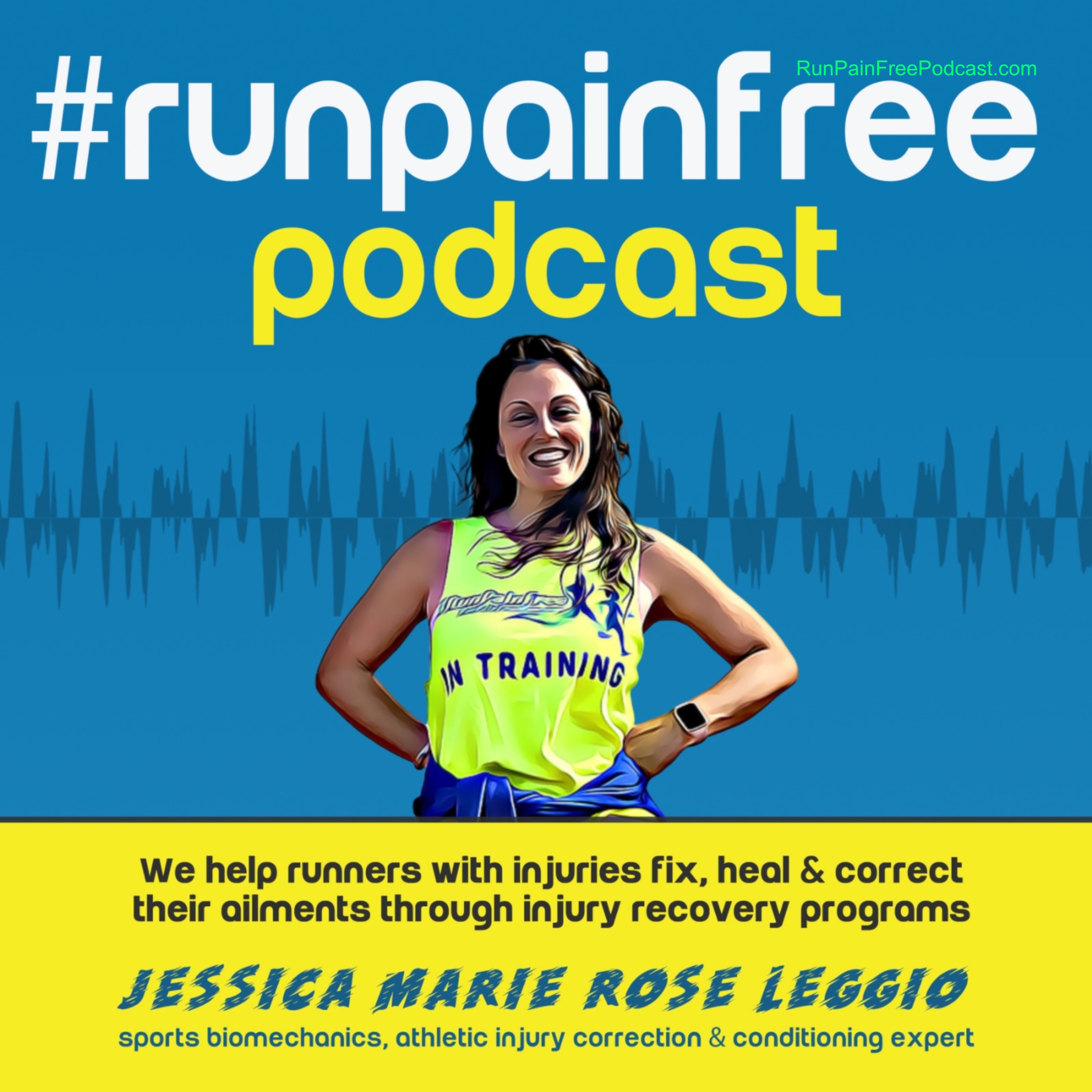🎧 Are You Using A Massage Gun For Running 🏃♀️ Pain Relief?
Description
Welcome to the #RunPainFree podcast!
Today Coach Jessica Marie Rose Leggio aims for the rising popularity of massage therapy guns and how they may cause injuries. Her counter-narrative shoots down the marketing claims and offers up some tools and advice that will aid your recovery without the risk of injury.
A power tool dressed up as a therapy device.
The new therapy guns are a result of DIY approaches to localized tissue therapy. Using a car buffer with a foam pad gained popularity, particularly amongst weight lifters and cross-fitters, to provide myofascial release pre and post-workout.
"I literally lost my mind when I saw them starting to take off in gyms here in New York City. It was ridiculous."
Using these DIY tools or modern massage guns, such as the Theragun, have a high risk of injury. As the name 'power tool' implies, much power comes out, often too much for your body. Also, the vibration limits your ability to get feedback on how deep you are going.
Bottom line: Massage guns were invented in bro science labs. Please, leave your power tools for home DIY, and don't you even think about using your staple gun for DIY acupuncture!
Get a trained professional
While therapy guns are targeted at-home use, they should be used by a trained professional. The danger of using them without the education and training is you are at a high risk of injury.
The most common problem is using a massage gun may feel good at the moment. However, you won't be aware of how deep you are penetrating your body. When you overuse these tools, they can bruise the muscle. Your muscle is exceptionally dense, and a bruise creates a deep pain that will take at least three months to recover from. And remember, the only reason you are using a massage gun is to speed up recovery, not delay it!
RunPainFree's approach: A power tool can't replace the power of the hands. The best muscle release occurs by feeling the knots and tension in the muscles. The person's body provides the therapist guidance and feedback about where and how much myofascial release needs to be performed. No new gimmick hitting the market will replace a trained professional.
Don't jump the gun with the latest fad; start foam rolling.
If you are not foam rolling or don't know how to foam roll, don't even think about getting a massage gun. Please, step away from the massage gun.
Foam rolling will teach you where your pockets of pain are and what areas of your body you need to attend to. It's also going to teach you that the underlying problem that causes you pain isn't where you feel it.
How to foam roll
You need to foam roll from joint to joint. For example, if you finish two inches short on your hamstrings, that part of your fascia that you didn't roll is going to be extremely tight. But herein lies the beauty of foam rolling. It is relatively easy to foam roll your entire body. You can foam roll your whole body. At the same time, the massage gun is very directed and specific. In terms of massaging your entire body, it's about as complex and effective as putting sun cream on your own back.
You may use a lacrosse ball or a golf ball in a situation where you may have an extremely tight muscle. However, you must lead and finish with the foam roller, so you don't miss any areas.
"There's a lot of things on the market that are invasive and people don't realize actually cause more harm than good."
A massage gun gives you little punches; you're not pressing into it like a foam roller. This action is something that is penetrating and punching your body. It is not the same thing as a lacrosse ball or a foam roller because it's an automated machine.
RunPainFree's verdict: Always lean on the side of preventing injuries. Why add a tool into your recovery regimen if it may cause harm?
A crash course on the fascia and why you need total body foam rolling
Fascia is all over your body
More Episodes
Episode Summary:
In this episode, Coach Jessica dives deep into the often misunderstood and misdiagnosed condition known as runner's knee. She debunks common myths, explains why knee pain is rarely about the knee itself, and shares insights on addressing the root causes of the pain. This episode...
Published 06/14/24
Published 06/14/24
Discover the truth behind building bone density and why weightlifting alone isn't the answer. Join us as we delve into functional fitness and debunk common myths on the #RunPainFree Podcast.
🔹 In This Episode:
Debunking the misconception that weightlifting is the sole solution for bone...
Published 03/23/24


